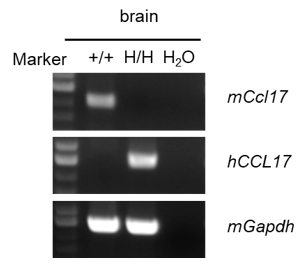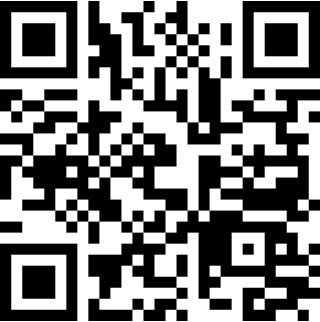B-hCCL17 mice
| Strain Name |
C57BL/6JNifdc-Ccl17tm1(CCL17)Bcgen/Bcgen |
Common Name | B-hCCL17 mice |
| Background | C57BL/6JNifdc | Catalog number | 114021 |
|
Aliases |
CCL17; TARC, ABCD-2, SCYA17, A-152E5.3 | ||
|
NCBI Gene ID |
6361 | ||
- CCL17/TARC is a chemokine that interacts with CCR4 and CCR8 to induce the chemoattraction of activated Th2 cells, basophils, and NK cells. It is produced by thymic dendritic cells, lymph node dendritic cells, monocytes, CD4+ T cells, keratinocytes, fibroblasts, bronchial epithelial cells, and Reed-Sternberg cells. CCL17 promotes Th2 cell recruitment to sites of inflammation and induces platelet aggregation and degranulation.
- CCL17 promotes Th2 cell recruitment to sites of inflammation and induces platelet aggregation and degranulation.
Targeting strategy
Gene targeting strategy for B-hCCL17 mice. The exons 1-3 of mouse Ccl17 gene that encode the whole molecule (ATG to STOP codon), including 3’UTR were replaced by human counterparts in B-hCCL17 mice. The promoter and 5’UTR region of the mouse gene are retained. The human CCL17 expression is driven by endogenous mouse Ccl17 promoter, while mouse Ccl17 gene transcription and translation will be disrupted.

Strain specific CCL17 expression analysis in homozygous B-hCCL17 mice by ELISA. Serum were isolated from wild-type C57BL/6(+/+) (male, n=3, 8-week-old), heterozygous B-hCCL17 mice (H/+) (male, n=3, 8-week-old) and homozygous B-hCCL17 mice (H/H) (male, n=3, 8-week-old). Expression level of mouse CCL17 were analyzed by ELISA (anti-mouse CCL17 ELISA kit: R&D, MCC170). Expression level of human CCL17 were analyzed by ELISA (anti-human CCL17 ELISA kit: R&D, DDN00). Mouse CCL17 was detectable in wild-type mice and heterozygous B-hCCL17 mice. Human CCL17 was detectable in heterozygous B-hCCL17 mice and and homozygous B-hCCL17 mice. Values are expressed as mean ± SEM.

Strain specific analysis of CCL17 mRNA expression in wild-type C57BL/6 mice and B-hCCL17 mice by RT-PCR. Brain RNA were isolated from wild-type C57BL/6 mice (+/+) and homozygous B-hCCL17 mice (H/H), then cDNA libraries were synthesized by reverse transcription, followed by PCR with mouse or human CCL17 primers. Mouse Ccl17 mRNA were detectable only in wild-type C57BL/6 mice. Human CCL17 mRNA was detectable only in homozygous B-hCCL17 mice, but not in wild-type mice.









